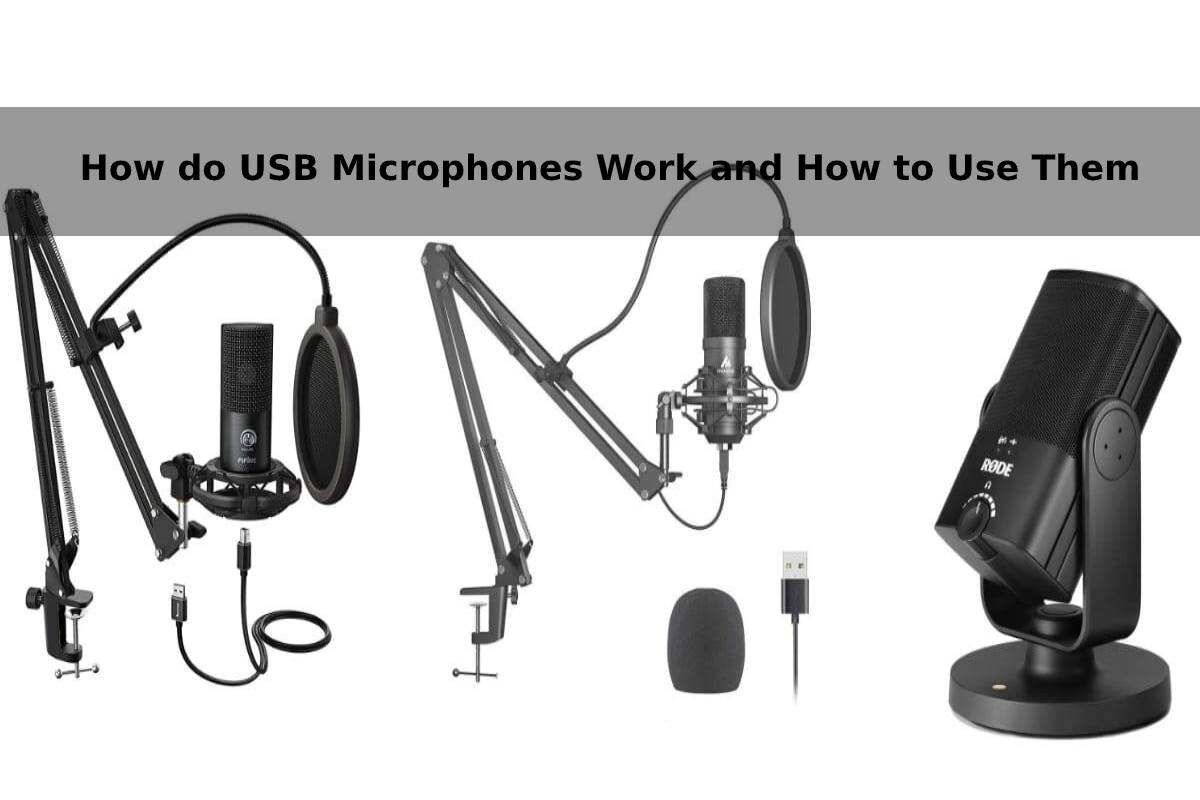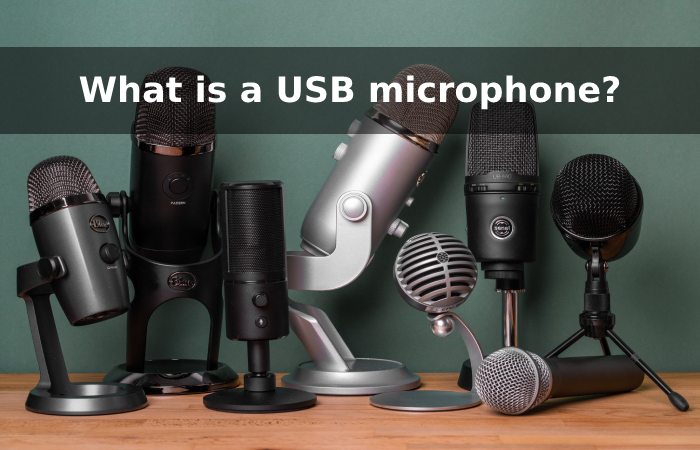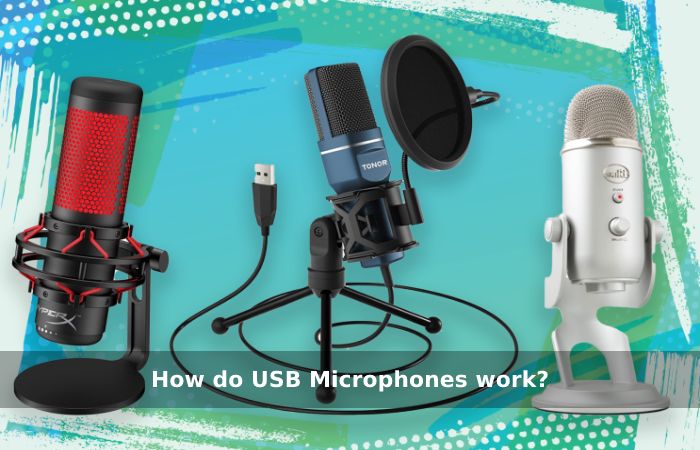
01 Apr How do USB Microphones Work and How to Use Them
Table of Contents
Introduction
USB microphones are a common alternative to typical XLR microphones due to their ease of use and relatively low prices. For this reason, many public opts for these cheap plug-and-play microphones.
How do USB microphones work? USB microphones, as transducers, work just like any other microphone by converting sound (mechanical wave energy) to audio (electrical power). Analog audio signals remain amplified and converted to digital signals within the built-in audio interface of the USB microphone and output via a USB connection.
What is a USB Microphone?

A USB microphone, in the meekest sense, is a microphone with a USB output.
First, it’s a microphone. Microphones are transducers that convert sound surfs into analogue audio signals. They do so with a transducer (known as a capsule, cartridge, or motor) that has a movable diaphragm.
Second, the expedient has a USB output which means the output is digital. More specifically, the result is a digital audio signal.
Therefore, the USB microphone must have an analogue-to-digital converter built into its design to convert the analogue signals of its transducer element into digital signals for output.
Therefore, a USB microphone can remain a microphone with a built-in digital audio interface that can remain directly connected to a computer (or any digital audio device) via a USB connection.
How do USB Microphones Work?

USB microphones are essentially the same as other microphones, the main difference being that they have built-in audio interfaces. Therefore, we should know how ‘typical’ microphones work to understand how USB microphones work.
However, there are no “typical” microphones. Instead, there is a multitude of different types of microphone transducers in the world that convert sound into audio in different ways.
The 3 most common types of microphone transducers (and the ones we’ll discuss in the article) are:
- Dynamic microphone transducers with mobile coil
- Condenser Microphone Transducers
- Tape Microphone Transducers
Before we describe these transducers, we must note that a USB microphone could use any of these transducer elements. Most USB microphones use electret condenser pills, which we’ll discuss below.
Also Read: Alienware M15 R7 Review: A Certified Powerhouse
Moving-Coil Dynamic USB Microphones Transducers
Dynamic microphone transducers in a mobile coil convert sound to audio by electromagnetic induction. Its transducer elements remain usually called cartridges, although the term “capsule” also works.
The mobile coil cartridge consists of 5 key components:
- Diaphragm
- Conductive “mobile” coil
- Magnets and poles
- Housing
- Electrical Cables
Sound waves cause changing amounts of pressure on both sides of the diaphragm, causing it to move back and forth in proportion to the sound waves.
A proportional alternating electric current remains induced through the wavering coil due to electromagnetic induction.
Electromagnetic induction is an everyday phenomenon that causes a magnetic field around an electrically conducting material as the electrical current flows through it. Instead, it is responsible for the induction of electric current through a conductive material as that material changes the magnetic field around it. The Dynamic Microphone Cartridge with Moving Coil uses the latter housing.
This AC voltage induced through the coil is hit and finally emitted from the dynamic microphone of the mobile ring.
Condenser USB Microphones Transducers
Condenser microphone transducers convert sound to audio by electrostatic. Its transducer elements are essentially designed as parallel plate capacitors and are called capsules.
The condenser capsule contains four key components:
- Diaphragm (front plate).
- Electrical Cables.
It can also remain achieved by using electret material in the capsule. Electret capacitors usually have a thin film of Electret material on their back plate, although other projects are possible.
The +5 VDC provided by the USB joining is generally insufficient to polarize a capacitor capsule, so USB condenser microphones typically use electret capsules.
The condenser capsule must have an extremely high impedance to keep its charge constant and function properly. This feature helps prevent the electrical charge from dissipating and allows the tablet to work correctly.
The problem is that the output audio signal from the capsule will rapidly degrade as it travels through any significant cable length. Therefore, an impedance converter is compulsory immediately after a condenser capsule.
There is a change in different USB connections. Standard USB microphone connections include:
- USB-B
- Micro USB-B
- USB 3.0 Type B
- USB 3.0 Micro B
At the other ends of the cable (where the USB microphone is connected), there could often be a diverse type of connector. These connectives include, but are not limited to:
- USB Type A
- USB Type C
- USB 3.0 Type A
- USB 3.0 Micro B
Conclusion
If the USB microphone does not have an output capability, you must select the computer output as the audio output in the recording software. If your software can’t choose different input and output sources, you’ll need to set up an added device (Mac only).
Also Read: Google Pixel Buds Pro review


No Comments